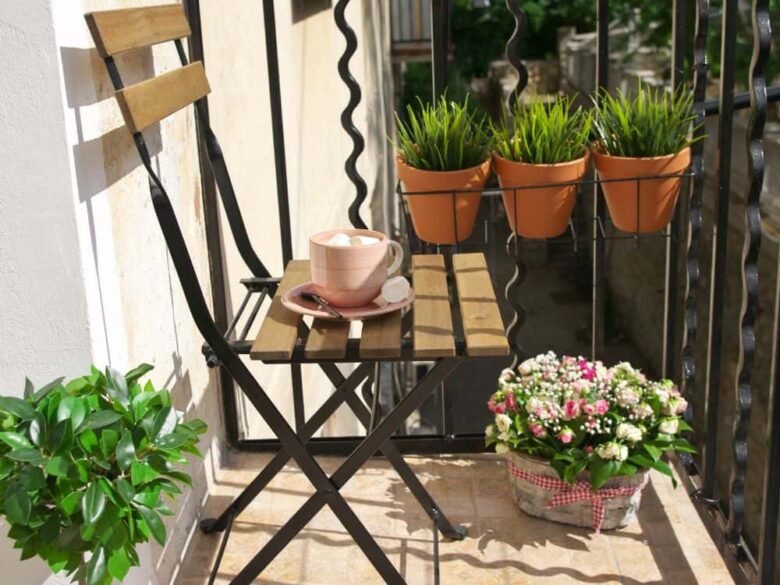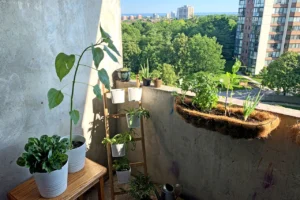Introduction
Apartment gardening offers a unique opportunity to bring the beauty and serenity of nature into your living space. Before you start digging in the dirt, let’s explore the essential steps to choose the right plants for your apartment garden.
Assess Your Space
The first step in creating your apartment garden is to assess the available space. Measure the dimensions of your balcony, windowsills, or any designated garden area. This assessment will help you determine the number and size of plants that can comfortably fit in your space.
Consider Light Conditions
Understanding the light conditions in your apartment is crucial for plant selection. Some apartments may have ample natural light, while others may be shaded. Choose plants that thrive in the available light conditions. For low-light apartments, consider snake plants, pothos, or peace lilies. If you have ample sunlight, options like succulents, herbs, and flowering plants can flourish.
Choose Low-Maintenance Plants
Apartment living often comes with a busy lifestyle. Opt for low-maintenance plants that require minimal care. Cacti and succulents are excellent choices as they can tolerate periods of neglect and still thrive.
Vertical Gardening
When space is limited, think vertically. Vertical gardens utilize wall space, making them perfect for apartments. Install wall-mounted shelves or use hanging planters to create a vertical garden that adds a touch of greenery without taking up valuable floor space.
Edible Plants for Apartment Gardens
If you enjoy cooking, consider growing herbs and vegetables in your apartment garden. Herbs like basil, rosemary, and mint thrive indoors and can enhance your culinary creations. Compact vegetable varieties, such as cherry tomatoes and dwarf peppers, can also be grown in containers.
Container Gardening
Container gardening is a popular choice for apartment dwellers. Selecting the right containers is crucial. Ensure that your pots have drainage holes to prevent overwatering and root rot. Additionally, choose containers that complement your apartment’s decor.
Selecting the Right Containers
When choosing containers, consider the material. Terracotta pots are breathable and provide good aeration for plant roots. Plastic pots are lightweight and retain moisture well. Select containers based on your plant’s specific needs.
Soil and Potting Mixes
Using the right soil and potting mix is essential for the health of your plants. Different plants have different soil requirements. Research the specific needs of your chosen plants and select the appropriate soil mix.
Watering Tips
Overwatering is a common mistake in apartment gardening. Ensure you water your plants appropriately, considering factors like humidity, plant type, and pot size. A moisture meter can help you determine when it’s time to water.
Fertilizing Your Apartment Plants
To ensure your plants receive the necessary nutrients, consider a balanced, water-soluble fertilizer. Follow the recommended feeding schedule to promote healthy growth.
Pest Control
Keep an eye out for common indoor plant pests like aphids and spider mites. Regularly inspect your plants, and if you notice any pests, take prompt action to eliminate them using natural or chemical solutions.
Pruning and Maintenance
Pruning helps maintain the shape and health of your plants. Remove dead or yellowing leaves and spent flowers regularly. This encourages new growth and prevents disease.
Benefits of Apartment Gardening
Apartment gardening offers numerous benefits, including improved air quality, stress reduction, and a sense of accomplishment. It allows you to connect with nature even in a bustling urban environment.
Conclusion
Creating a thriving apartment garden is an enjoyable and rewarding endeavor. By carefully selecting the right plants, containers, and paying attention to their specific needs, you can transform your apartment into a green oasis. So, roll up your sleeves, get your hands dirty, and start enjoying the beauty of nature within the confines of your apartment.
FAQs
1. Can I grow a tree in my apartment garden?
In most cases, it’s not practical to grow a tree in an apartment due to space limitations. However, you can consider small, dwarf tree varieties that can thrive in large containers.
2. How often should I water my apartment plants?
The frequency of watering depends on various factors, including the type of plant, pot size, and environmental conditions. It’s best to check the moisture level in the soil before watering to avoid overwatering.
3. What are some common indoor plant pests, and how can I get rid of them?
Common indoor plant pests include aphids, mealybugs, and spider mites. You can use natural remedies like neem oil or insecticidal soap to control these pests. For severe infestations, consult with a local nursery or garden center for advice.
4. Can I use artificial light for plants in low-light apartments?
Yes, you can supplement natural light with artificial light sources like grow lights. This can help plants that require more light to thrive in low-light conditions.
5. Are there any specific apartment-friendly plants for pet owners?
Yes, some plants are non-toxic to pets and can be a great choice for apartment dwellers with furry friends. Examples include spider plants, Boston ferns, and African violets. Always research plants to ensure they are safe for your pets.



